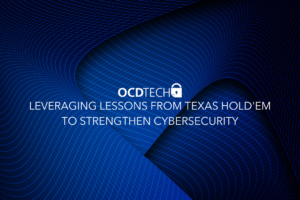When it comes to building apps quickly and efficiently, Bubble.io has become a go-to platform for many founders. Its intuitive, no-code environment allows you to take an idea from concept to launch without needing a traditional development team. However, as seamless as the app-building process is on Bubble, there’s a critical aspect that it doesn’t fully cover: SOC2® compliance.
If you’re launching a product or service that will handle sensitive customer data—whether it’s personal, financial, or otherwise—you need to take compliance seriously. In particular, if you’re targeting B2B markets, your customers (especially in regulated industries like finance or healthcare) will expect you to provide a SOC2® report as part of your security and risk management practices. This certification demonstrates that your business adheres to strict security controls.
So, what is SOC2®? Why do you need it, and how does it complement the technical capabilities of Bubble.io? Let’s break it down.
What is SOC2®, and Why Does it Matter?
SOC2® stands for System and Organization Controls 2, a framework established by the American Institute of Certified Public Accountants (AICPA). SOC2® audits ensure that service providers (that’s YOU!) manage customer data securely based on five “trust service criteria”: security, availability, processing integrity, confidentiality, and privacy.
For startups and founders launching apps, especially those handling sensitive customer data, SOC2®compliance is often a non-negotiable requirement from potential clients and investors. It serves as proof that your organization takes data security seriously.
Here are some reasons why SOC2® compliance should be on your radar as you build your app on Bubble:
– Client Trust: B2B customers expect their service providers to manage their data responsibly. A SOC2® report can be the difference between winning or losing a major deal.
– Investor Confidence: Investors look for companies that have strong operational safeguards, especially when sensitive data is involved.
– Risk Management: Data breaches or security mishaps can lead to severe legal and financial consequences. SOC2® compliance ensures you have processes in place to mitigate these risks.
– Competitive Edge: SOC2® certification sets you apart from competitors who may overlook this essential aspect of their business.
The Strength of Bubble.io: A No-Code Builder
There’s no denying that Bubble.io simplifies app development for non-technical founders. It removes many barriers traditionally associated with product development—coding, deployment, server management, etc. With Bubble, you can focus on creating a product, marketing it, and refining it based on customer feedback without needing a full-stack development team.
Bubble provides security measures such as SSL encryption, but these built-in safeguards focus primarily on the application’s technical side—like app functionality and user data protection within the platform itself. However, achieving SOC2® compliance requires a broader approach that extends beyond the platform’s capabilities.
What Bubble.io Doesn’t Cover: The SOC2® Compliance Gap
While Bubble is fantastic for building your app, SOC2® compliance goes beyond the technical aspects of your product and into your organization’s internal controls. Some of the areas that Bubble.io does not cover include:
– Policies and Procedures: SOC2® requires that you have documented policies around data security, access control, incident response, and vendor management. This isn’t something that Bubble provides.
– Auditing and Monitoring: SOC2® requires continuous monitoring and logging of access to sensitive data. While Bubble offers some built-in security features, comprehensive auditing and logging must be implemented separately.
– Disaster Recovery: SOC2® expects you to have a disaster recovery plan that outlines how you will restore services and recover data in the event of a breach or disaster. Bubble doesn’t automatically include these capabilities as part of their service.
– Third-Party Risk Management: You are responsible for managing vendors and service providers that interact with your app. This includes ensuring they meet SOC2® standards, something outside of Bubble’s built-in functionality.
– Employee Security Training: A SOC2® audit will assess your staff’s awareness and understanding of security policies. Bubble.io cannot provide this training for your team—it’s an internal process you need to implement.
Bridging the Gap: How to Achieve SOC2® Compliance While Using Bubble.io
To ensure your app meets SOC2® standards while building on Bubble.io, you’ll need to address the compliance aspects yourself or with external support. Here’s how you can start:
1. Conduct a Gap Analysis: Work with a third-party auditor or consultant to evaluate where your organization’s security controls fall short of SOC2® requirements.
2. Implement Key Policies: Establish internal policies on incident response, access control, data retention, and more. This is critical for passing a SOC2® audit.
3. Prepare for Regular Audits: SOC2® isn’t a one-time certification. Regular audits will ensure that you’re maintaining the proper controls over time.
For founders launching their apps on Bubble.io, the platform delivers an incredible array of tools that make building and scaling an app easier than ever. But while Bubble takes care of much of the technical heavy lifting, SOC2® compliance requires a broader focus on your organization’s security practices.




